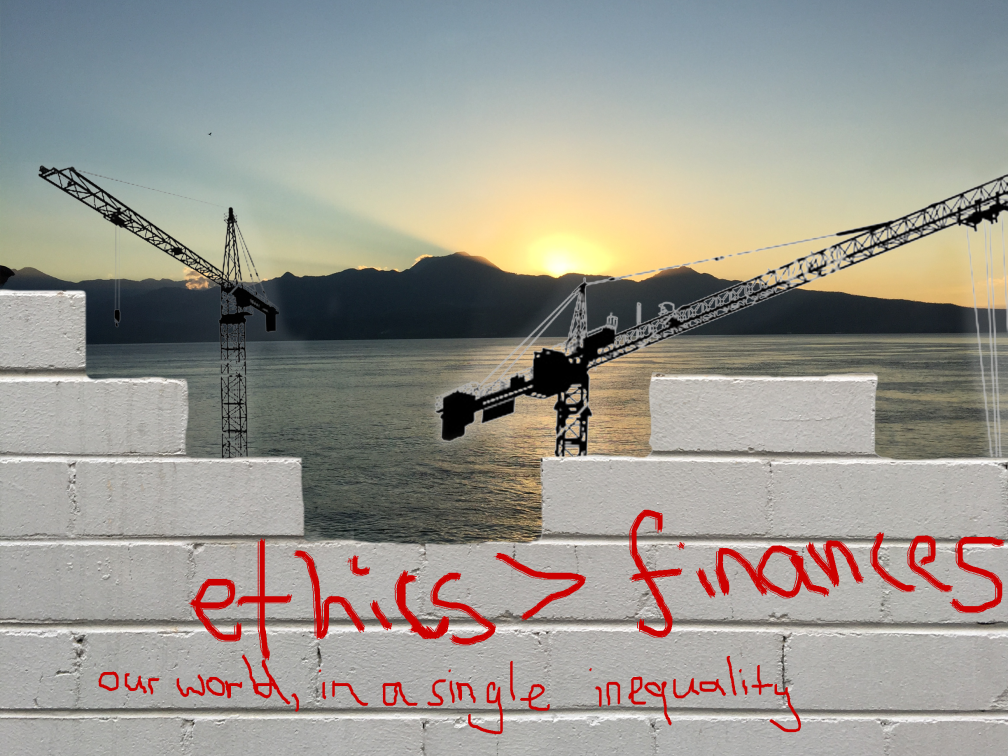
After completing my first image with its minimalist graphic style, I resolved to create my second image as more of a traditionally manipulated work, altering and synthesising photographs of my own making to create a photorealistic composite. In this image, I wished to explore the interactions which everyday people have with the City—an umbrella term which here pertains not only to the built environment of metropolises such as Sydney, but also to the social environments that such physical settings present, and which are sometimes reflected in the media and communication forms that exist in these spaces.
As Hoggart (in Hartley 2009) and Rennie et al. (2016) discuss in their respective works, media and mass communication can sometimes act in ways contrary to their perceived purpose as all-inclusive distributors of information; in fact, they can commonly act as exclusive forces which selectively disadvantage demographic groups. With this in mind, I had initially considered taking a photograph of a beggar in or around the tunnels of Central Station—a location where many of them are passed by or ignored by commuters. However, further consideration of this idea raised many ethical issues regarding the granting of consent and the establishment of identity for any subjects of such a photo, and so I decided against this concept.
Keeping with the theme of social commentary, I instead decided to present a message similar to what I originally envisioned in the above—a work which reflects on the manipulation of messages through media in urban environments. I decided to satirise the ongoing campaigns by the NSW State Government and the City of Sydney Local Government which promote their focus on construction and infrastructure growth, with slogans such as ‘My Sydney: Tomorrow’s Sydney’ and ‘The New State of Business’.
I manipulated an image of a white brick wall and placed red text upon it with what I perceived to be a relevant socieoeconomic message; the aesthetic of this was heavily inspired by the album cover for Pink Floyd’s The Wall (1979). For this reason, the text is drawn by hand in an attempt to emulate the appearance of graffiti. The wall itself was the first part of the image to be manipulated, using a rough and manual eraser to create a rugged feel for the edges of the bricks.




Behind this wall, I placed an image which I took while on vacation in the Philippines; a sunset over a mountain which is intended to signify the natural paradises that once existed outside of cities and the built environment. Between this backdrop and the wall I placed silhouetted cranes (sourced from Creative Commons) which are positioned as if they are constructing the wall—in this sense, the image presents the notion that society is building walls between us and our goals and desires; almost as if imprisoning us within its frameworks.
The cranes were originally taken from a photo I had captured in Lane Cove. I first corrected for the perspective of the photo, but during the process of manipulation I found it too difficult to remove the blue background of the cranes, and so instead decided to use the publicly-sourced silhouettes in the final version.
References
Hartley, J. 2009, ‘Repurposing Literacy’, in The Uses of Digital Literacy, pp.1-38.
Pink Floyd. 1979. The Wall. Recorded December 1978 – November 1997. Columbia Records.
Rennie, E., Hogan, E., Gregory, R. Crouch, R., Wright, A. & Thomas, J. 2016, ‘Introduction’, Internet on the Outstation: The Digital Divide and Remote Aboriginal Communities, pp.13-27.
Transport for NSW 2016, Tomorrow’s Sydney, viewed 20 October 2016, <http://mysydneycbd.nsw.gov.au>



